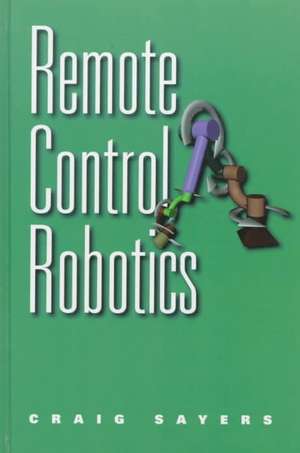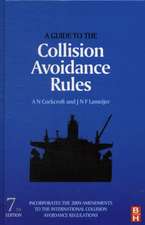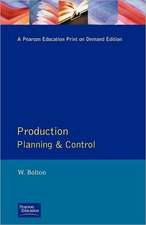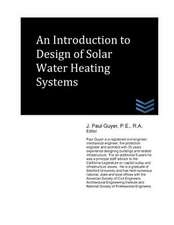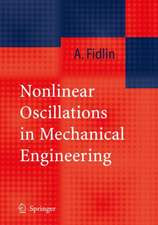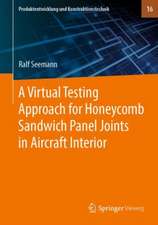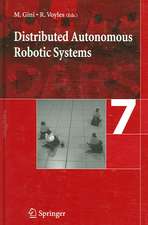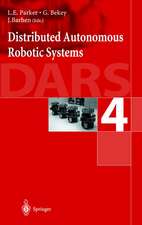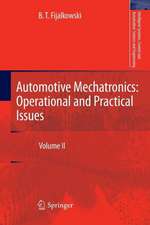Remote Control Robotics
Autor Craig Sayersen Limba Engleză Hardback – 21 dec 1998
| Toate formatele și edițiile | Preț | Express |
|---|---|---|
| Paperback (1) | 638.43 lei 43-57 zile | |
| Springer – 23 oct 2012 | 638.43 lei 43-57 zile | |
| Hardback (1) | 643.48 lei 43-57 zile | |
| Springer – 21 dec 1998 | 643.48 lei 43-57 zile |
Preț: 643.48 lei
Preț vechi: 757.04 lei
-15% Nou
Puncte Express: 965
Preț estimativ în valută:
123.15€ • 128.09$ • 101.66£
123.15€ • 128.09$ • 101.66£
Carte tipărită la comandă
Livrare economică 14-28 aprilie
Preluare comenzi: 021 569.72.76
Specificații
ISBN-13: 9780387985978
ISBN-10: 0387985972
Pagini: 224
Ilustrații: XIX, 224 p.
Dimensiuni: 155 x 235 x 17 mm
Greutate: 0.5 kg
Ediția:1999
Editura: Springer
Colecția Springer
Locul publicării:New York, NY, United States
ISBN-10: 0387985972
Pagini: 224
Ilustrații: XIX, 224 p.
Dimensiuni: 155 x 235 x 17 mm
Greutate: 0.5 kg
Ediția:1999
Editura: Springer
Colecția Springer
Locul publicării:New York, NY, United States
Public țintă
ResearchCuprins
1 Introduction.- 1.1 The fundamental tradeoff.- 1.2 Automation.- 1.3 Subsea robotics.- 1.4 Chapter overview.- 2 Basics.- 2.1 Single link robot.- 2.2 Two-link toy.- 2.3 Two-link robot.- 2.4 Forward and inverse kinematics.- 2.5 Redundancy.- 2.6 Moving out of the page.- 2.7 Input devices.- 2.8 Summary.- 3 Historical Perspective.- 3.1 Traditional bilateral teleoperation systems.- 3.2 Giving up force feedback.- 3.3 Other teleoperation systems.- 3.4 Operator aids.- 3.5 Increasingly inter-site distances.- 3.6 Summary.- 4 Remote Control.- 4.1 Control of remote cameras.- 4.2 Controlling a remote machine.- 4.3 Summary.- 5 Teleprogramming.- 5.1 Background.- 5.2 Operation.- 5.3 The fundamental tradeoff.- 5.4 Caches.- 5.5 Summary.- 6 A Natural Operator Interface.- 6.1 The teleprogramming operator interface.- 6.2 Creating a natural interface.- 6.3 The degree-of-freedom problem.- 6.4 Summary.- 7 Synthetic Fixtures.- 7.1 Overview.- 7.2 Operation.- 7.3 Terminology.- 7.4 Command fixtures.- 7.5 Example applications.- 7.6 Algorithm.- 7.7 Application to teleprogramming.- 7.8 Application to conventional teleoperation.- 7.9 Application to virtual reality.- 7.10 Alternative input devices.- 7.11 Summary.- 8 Visual Imagery.- 8.1 Camera calibration.- 8.2 Updating the world model.- 8.3 Real-time visual imagery.- 8.4 Intelligent fragmentation.- 8.5 Intelligent frame rate.- 8.6 Intelligent task rate.- 8.7 Compression algorithms.- 8.8 Other sensory modalities.- 8.9 Future implementations.- 8.10 Summary.- 9 Expecting the Unexpected.- 9.1 Definition.- 9.2 Avoiding operator error.- 9.3 Avoiding interpretation errors.- 9.4 Predicting errors.- 9.5 Error detection and diagnosis.- 9.6 Error recovery.- 9.7 Summary.- 10 Command Generation and Interpretation.- 10.1 Master-to-slave teleprogramming language.- 10.2 Slave-to-master teleprogramming language.- 10.3 Delaying command execution.- 10.4 Adding additional sensory feedback.- 10.5 Summary.- 11 Results and Observations.- 11.1 Laboratory trials.- 11.2 Test-tank trials.- 11.3 Migrating to a subsea system.- 11.4 The October experiments.- 11.5 The November experiments.- 11.6 Future implementations.- 12 Discussion.- 12.1 Bandwidth considerations.- 12.2 Programming by demonstration.- 12.3 Learning experience.- 12.4 Interacting with uncertainty.- 12.5 The virtual reality mirage.- 12.6 Future interfaces.- 12.7 The distant future.- 13 Conclusions.- A.1 Operator interaction with the master station.- A.1.1 The user interface.- A.1.2 The world model.- A.1.3 Interpreting operator action.- A.2 Master-to-slave communication.- A.2.1 Basic definitions.- A.2.2 The command stream.- A.2.3 Pre-motion commands.- A.2.4 Motion commands.- A.2.5 Post-motion commands.- A.2.6 Example command stream.- A.2.7 Telemetry.- A.3 Command execution at the slave site.- A.4 Slave-to-master communication.- A.4.1 The state message.- A.4.2 The reply stream.- A.4.3 The environment reply.- A.4.4 The error reply.- A.4.5 Example reply stream.- A.4.6 Telemetry.- A.5 Interpreting slave replies.- A.6 Maintaining and reviewing the historical record.- References.
Caracteristici
Begins with a basic introduction to the fundamentals of robot control Considers the important problems to be overcome: delays or noisy control lines, feedback and response information, and predictive displays Readers are assumed to have a basic understanding of robotics though this may be their first exposure to the subject of telerobotics
